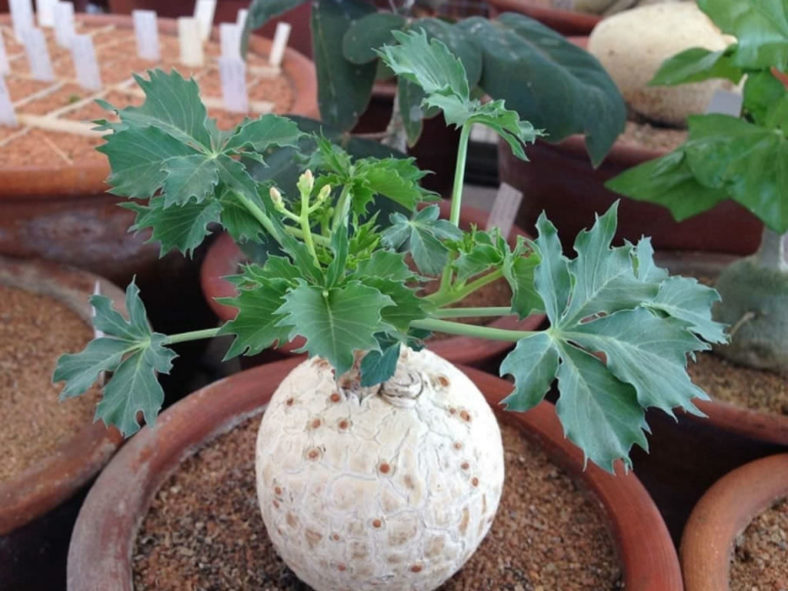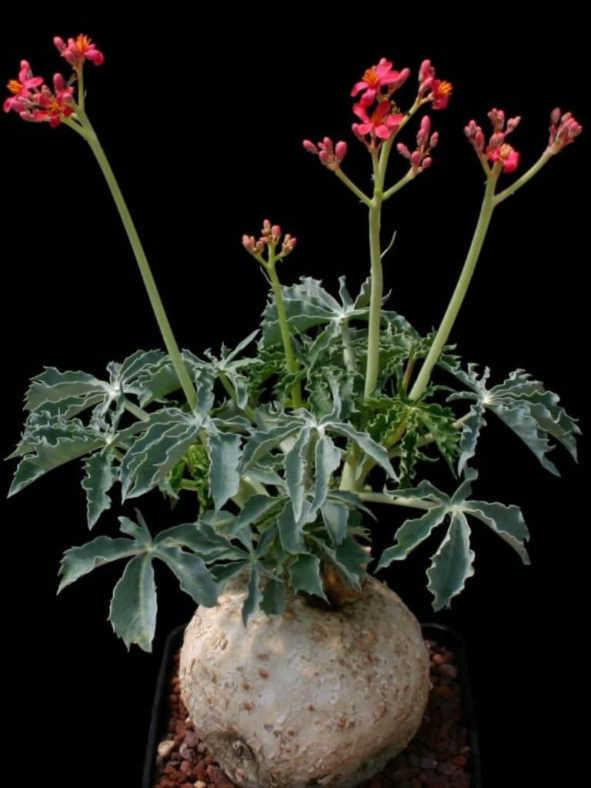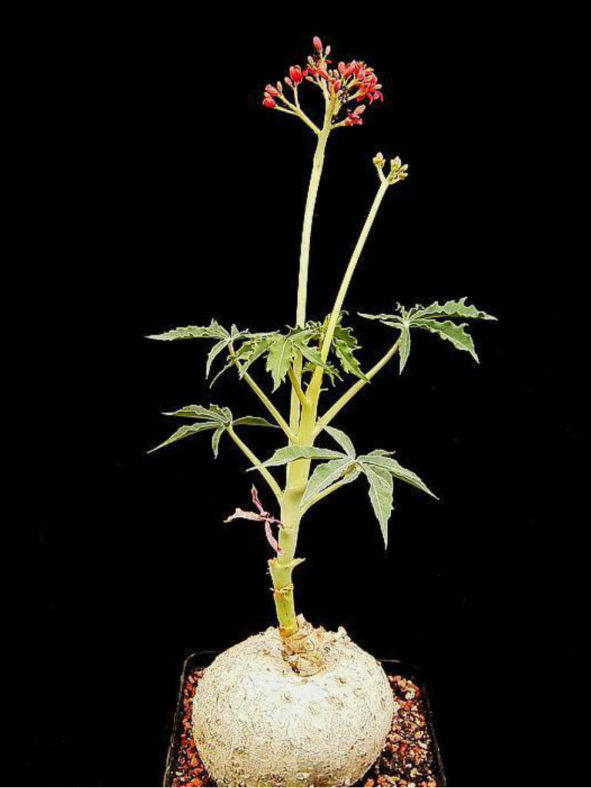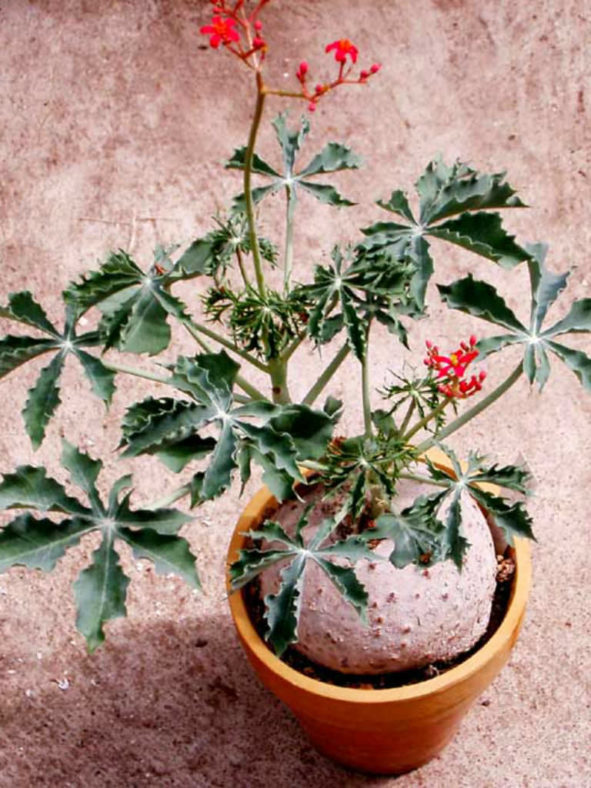Scientific Name
Jatropha cathartica Terán & Berland.
Common Name(s)
Berlander's Nettlespurg
Synonym(s)
Adenoropium berlandieri, Jatropha berlandieri
Scientific Classification
Family: Euphorbiaceae
Subfamily: Crotonoideae
Tribe: Jatropheae
Genus: Jatropha
Origin
The native range of this species is from Texas in the south-central United States to Coahuila, Nuevo León, and Tamaulipas in northeastern Mexico. It grows on grassy, rocky clay and saline flats.
Description
Jatropha cathartica, also known as Jatropha berlandieri, is an attractive plant with woody caudex and erect, sparsely branched stems arising from the upper part of the caudex and bearing blue-green leaves deeply divided into five to seven segments. It can grow up to 12 inches (30 cm) tall. The caudex is cloudy white with stem and root scars, globose or subglobose, and can reach up to 5.4 inches (13.5 cm) in diameter. The stems are green, somewhat succulent, and usually grow about 4 inches (10 cm) long. The leaves are heart-shaped in outline, measuring up to 4.4 inches (11 cm) long and 2.4 inches (6 cm) wide. They are attached to the stems by petioles up to 4 inches (10 cm) long. The leaf segments are lance-shaped with coarsely dentate margins and 5 to 7 primary veins.
Primarily during the spring and summer months, when plants grow actively, clusters of pink flowers rise above the foliage on stalks that can grow up to 4.4 inches (11 cm) long. The fruits are greenish, spherical capsules with white stripes around each segment and brown seeds with darker markings inside. They can grow up to 0.6 inches (1.5 cm) in diameter.

Hardiness
USDA hardiness zone 10a to 11b: from 30 °F (−1.1 °C) to 50 °F (+10 °C).
How to Grow and Care
The key to growing a successful Jatropha is properly balancing moisture and drainage. They typically appreciate a steady water supply, but the most popular species cannot tolerate being submerged or soaked and quickly succumbing to root rot. Many popular Jatropha species make excellent small trees for a conservatory or sunny corner. Keep them well-pruned so they don't outgrow their space too soon. Jatropha plants are vulnerable to pests, including aphids, mealy bugs, scale, and whitefly. Identify the infestation as early as possible and treat it with the leave toxic option.
Jatropha can be propagated by seed (if you're fortunate enough to get sides) or stem cuttings. To take stem cuttings, remove a small piece of stem, dip it in rooting hormone, then put it into a small pot with seedling starter soil. Place in a warm, bright spot and wait for new growth.
See more at How to Grow and Care for Jatropha.
Links
- Back to genus Jatropha
- Succupedia: Browse succulents by Scientific Name, Common Name, Genus, Family, USDA Hardiness Zone, Origin, or cacti by Genus
Photo Gallery
Click on a photo to see a larger version.


